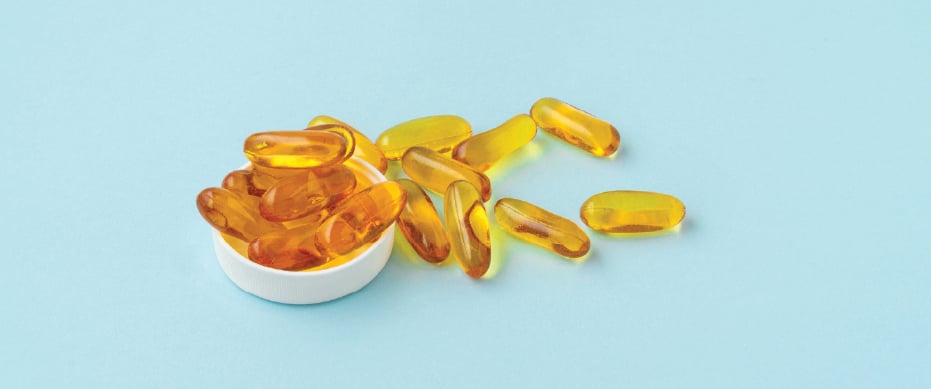One of the great challenges within nutritional clinical practice is accurately measuring a patient’s status for each nutrient. While the most non-invasive way to do this is to estimate intake of various nutrients based on food diaries or food frequency questionnaires and then cross-reference this information with a database of food nutrients (all done by apps and computers these days), this is a crude estimate that relies on many factors (truthfulness, proper recollection, proper estimates of portion sizes, average nutrient densities, proper digestion and absorption, a host of factors that reduce nutrient bioavailability and many more). While such an exercise is still important for clinician and patient alike (to start an honest discussion of a person’s real diet), the data collected in this way may not help in determining the patient’s status of each nutrient, for which some sort of biomarker might be needed.
In the second edition of our book Supplementing Dietary Nutrients (Point Institute, 2020), we include a detailed monograph for each nutrient with a dietary reference intake (DRI), describing one or more ways to measure each nutrient’s status. These are often serum/plasma or red blood cell (RBC) measures of the nutrient itself (e.g., magnesium), or a surrogate metabolite that is dependent upon the activity of the nutrient (e.g., elevated methylmalonic acid for low cobalamin status). However, even after decades of refinement, some of these biomarkers are still considered to be poor overall measures of functional nutrient status, especially since some respond poorly to supplementation. However, this is not true of the O3I, a biomarker of omega-3 nutrient status, which is proven to be a remarkable measure of overall health risks and closely tied to food-derived and supplemental omega-3 intake.
If you are not familiar with this measure, the O3I describes the percentage of EPA and DHA fatty acids within RBCs. Since dietary fatty acids routinely incorporate into membranes throughout the body and RBCs have a predictable half-life, the O3I is a measure of the long-term absorption and tissue deposition of n-3 fatty acids.1 In fact, research has shown that EPA and DHA levels in RBCs correlate with levels in cardiovascular tissues and many other tissues in the body.2-4
Perhaps the most well-known fact about the O3I is that it is inversely related to cardiovascular events and mortality, where the highest risk is associated with subjects who have an O3I of less than 4% and the lowest risk is in subjects who have an O3I greater than 8%.5 A meta-analysis of 10 cohort studies measuring risk in subjects based on their estimated omega-3 index predicted that subjects with an omega-3 index of 8% had a 30% lower risk for fatal CHD compared to those with an omega-3 index of 4%.2
The O3I index is also statistically associated with many disparate medical conditions, such as type 2 diabetes, bipolar disorder, running-related injuries and asthma control.3-6 This really shouldn’t be a surprise since every membrane in the body is affected by the incorporation of EPA and DHA, altering their fluidity and signal transducing capacity. More recently, it has been established that EPA and DHA have anti-inflammatory potential and are the precursors for the family of compounds known as specialized pro-resolving mediators, or SPMs (resolvins, meresins and protectins).7 Consumption of EPA and DHA through the diet or supplementation is known to increase the levels of these compounds and also decrease various biomarkers of systemic inflammation.8,9 A person’s O3I is also positively associated with serum levels of SPMs and inversely related to biomarkers of inflammation.10,11
Therefore, since the risk reduction potential of supplemental EPA or DHA appears to be dependent on the absorption and tissue incorporation of EPA and DHA, determining a subject’s baseline and post-supplemental O3I may be necessary to optimize risk reduction related to omega-3 supplementation. Testing a patient’s O3I may be especially important to ensure that they are taking the correct dose to optimize their O3I and reduce the risk for CVD and other conditions.
Flock et al. have convincingly shown that the treatment dose of EPA and DHA (using a re-esterified triglyceride [rTG] form of fish oil) has a predictable effect on the change in O3I, but they also discovered inter-individual differences (especially based on a person’s body weight) account for a high degree of variability in the omega-3 index changes seen after consuming EPA and DHA.12 Not surprisingly, a person’s BMI (particularly fat mass) influenced the dose needed to increase their O3I.
Therefore, based on this study, it is essential for the clinician to understand that without testing a person’s O3I, it is not possible to predict the current (or change in) O3I, based simply on the EPA and DHA dose given. Interestingly, DHA intake can increase the O3I index better than EPA, and rTG forms of fish oil are superior at raising the O3I compared to ethyl ester (EE) forms.13,14
These factors, among others, have given rise to my general recommendation to supplement using an rTG fish oil that has slightly higher DHA than EPA for most chronic disease conditions (such as CVD prevention). However, the O3I is readily available through numerous laboratories and can easily be incorporated into a clinician’s CVD risk assessment—and it should be included in the standard health assessment for every patient as we follow other biomarkers of risk.

Thomas G. Guilliams, PhD (Tom) earned his doctorate in molecular immunology from the Medical College of Wisconsin in Milwaukee. For the past two decades, he has spent his time investigating the mechanisms and actions of lifestyle and nutrient-based therapies, and is an expert in the therapeutic uses of dietary supplements. Tom serves as an adjunct assistant professor at the University of Wisconsin School of Pharmacy and was the VP of Science for Ortho Molecular Products for 24 years (he now serves them as a consultant). Since 2014 he has been writing a series of teaching manuals (Road Maps) that outline and evaluate the evidence for the principles and protocols that are fundamental to the functional and integrative medical community. He is the founder and director of the Point Institute, an independent research and publishing organization that facilitates the distribution of his many publications. A frequent guest-speaker, Dr. Guilliams provides training to a variety of health care disciplines in the use of lifestyle and natural medicines. He lives in the woods outside of Stevens Point, Wisconsin with his wife and children.
References
- Harris WS, Von Schacky C. The Omega-3 Index: a new risk factor for death from coronary heart disease? Prev. Med. 2004; 39:212-20
- Harris WS, Del Gobbo L, Tintle NL. The Omega-3 Index and relative risk for coronary heart disease mortality: Estimation from 10 cohort studies. Atherosclerosis. 2017; 262:51-4
- Ma MY, Li KL, Zheng H, Dou YL, Han LY, Wang L. Omega-3 index and type 2 diabetes: Systematic review and meta-analysis. Prostaglandins Leukot Essent Fatty Acids. 2021;174:102361.
- Berger M, Seemüller F, Voggt A, et al. Omega-3 fatty acids in bipolar patients with a low omega-3 index and reduced heart rate variability: the "BIPO-3" trial. Int J Bipolar Disord. 2022;10(1):9.
- Davinelli S, Intrieri M, Ali S, et al. Omega-3 index and AA/EPA ratio as biomarkers of running-related injuries: An observational study in recreational runners. Eur J Sport Sci. 2021;1-9.
- Stoodley I, Garg M, Scott H, Macdonald-Wicks L, Berthon B, Wood L. Higher Omega-3 Index Is Associated with Better Asthma Control and Lower Medication Dose: A Cross-Sectional Study. Nutrients. 2019;12(1):74.
- Calder PC. Eicosapentaenoic and docosahexaenoic acid derived specialised pro-resolving mediators: Concentrations in humans and the effects of age, sex, disease and increased omega-3 fatty acid intake. Biochimie. 2020;178:105-123.
- Dezfouli M, Moeinzadeh F, Taheri S, Feizi A. The Effect of Omega-3 Supplementation on Serum Levels of Inflammatory Biomarkers and Albumin in Hemodialysis Patients: A Systematic Review and Meta-analysis. J Ren Nutr. 2020;30(3):182-188.
- Barden AE, Mas E, Croft KD, Phillips M, Mori TA. Specialized proresolving lipid mediators in humans with the metabolic syndrome after n-3 fatty acids and aspirin. Am J Clin Nutr. 2015;102(6):1357-1364.
- Schaller MS, Zahner GJ, Gasper WJ, et al. Relationship between the omega-3 index and specialized pro-resolving lipid mediators in patients with peripheral arterial disease taking fish oil supplements. J Clin Lipidol. 2017;11(5):1289-1295.
- Fontes JD, Rahman F, Lacey S, et al. Red blood cell fatty acids and biomarkers of inflammation: a cross-sectional study in a community-based cohort. Atherosclerosis. 2015;240(2):431-436.
- Flock MR, Skulas-Ray AC, Harris WS, et al. Determinants of erythrocyte omega-3 fatty acid content in response to fish oil supplementation: a dose-response randomized controlled trial. J Am Heart Assoc. 2013; 2:e000513
- Allaire J, Harris WS, Vors C, et al. Supplementation with high-dose docosahexaenoic acid increases the Omega-3 Index more than high-dose eicosapentaenoic acid. Prostaglandins Leukot Essent Fatty Acids. 2017;120:8-14.
- Neubronner J, Schuchardt JP, Kressel G, Merkel M, von Schacky C, Hahn A. Enhanced increase of omega-3 index in response to long-term n-3 fatty acid supplementation from triacylglycerides versus ethyl esters. Eur J Clin Nutr. 2011;65(2):247-254.




